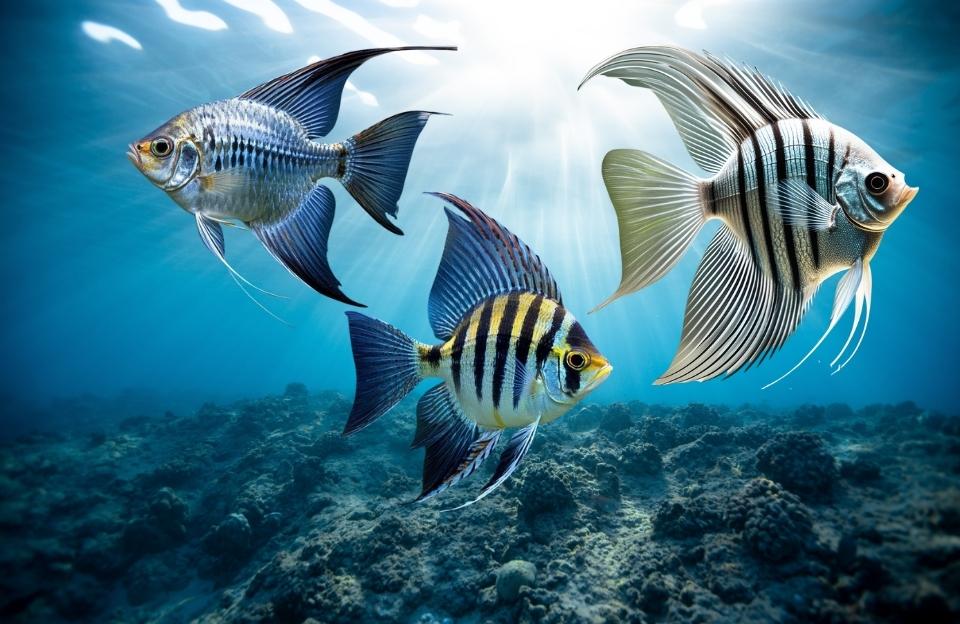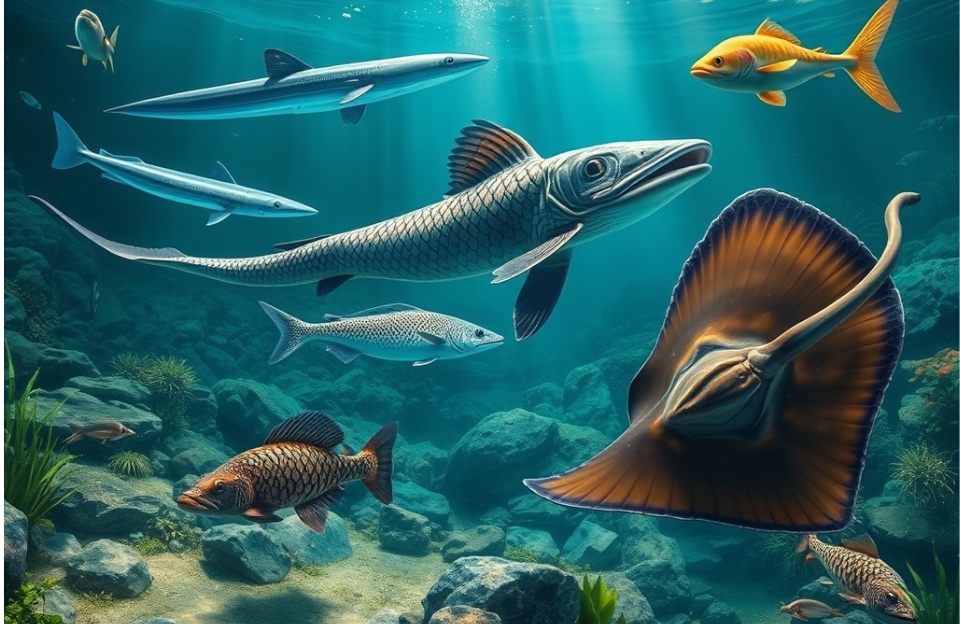Last Updated on January 23, 2025 by Falcone Dulce
Angelfish are very beautiful and fascinating in the magical underwater world. Not only are these energetic, vivid fish stars for the aquarium, but they also glide elegantly across tropical coral reefs. Angelfish attract the attention of many aquatic aficionados since their varied forms and vivid colors reflect the artwork of nature. In this article, you will find everything you need to know about angelfish, from their natural habitat to care and breeding. Read on to unveil these stunning creatures!
What Are Angelfish?
Angelfish are captivating freshwater fish belonging to the family Cichlidae, which encompasses a wide variety of species known for their vibrant colors and unique behaviors. These fish are particularly popular among aquarists due to their striking appearance and relatively manageable care requirements.
Classification and Species
Within the Cichlidae family, several species of angelfish are noteworthy:
| Species Name | Common Name | Description | Size |
Pterophyllum scalare | Common Angelfish | The most popular species in the aquarium trade, recognized for its silver body with dark vertical stripes. | Typically 6 inches (15 cm), can reach up to 12 inches (30 cm) in optimal conditions. |
Pterophyllum leopoldi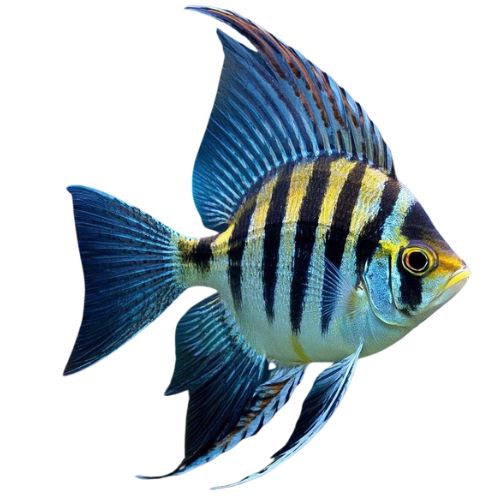 | Leopold Angelfish | Known for its slender body and pronounced black patterns, adding variety to the angelfish family. | Size varies, generally smaller than P. scalare. |
Pterophyllum altum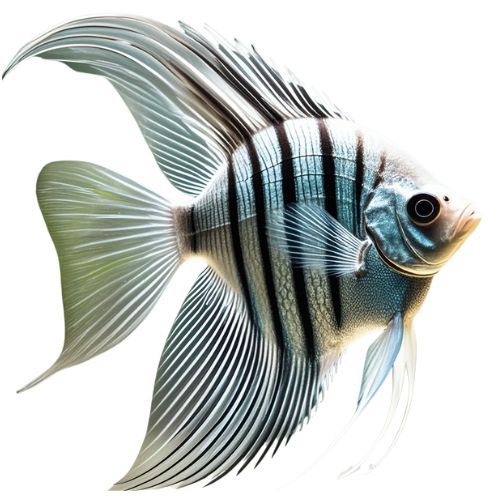 | Altum Angelfish | Larger and more elongated, often displaying a silver hue with dark stripes. | Can grow larger than 6 inches (15 cm). |
Physical Characteristics
Angelfish exhibit a range of stunning colors, including:
- Silver: The most common coloration, often with dark vertical stripes.
- Black: Solid black or featuring contrasting white or silver markings.
- Gold: Bright yellow or golden hues.
- Marble: A mix of colors creating a marbled effect, including black, white, and gold.
- Koi: Resembling koi fish, these angelfish have a distinctive pattern of orange, white, and black.
These color variations not only enhance their beauty but can also indicate specific species or hybrids within the angelfish family.
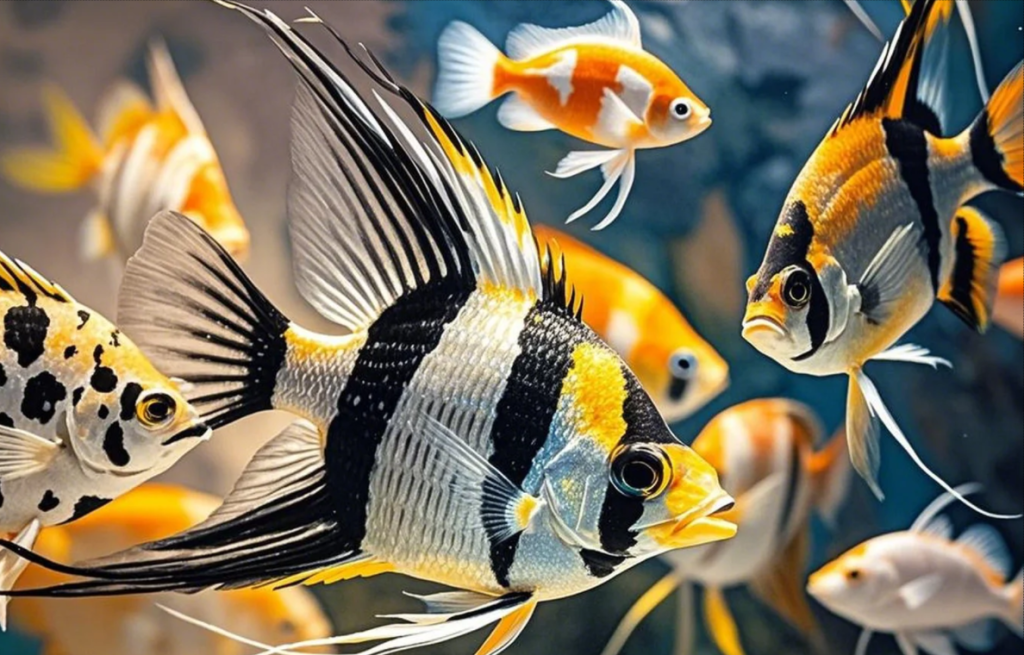
Natural Habitat
Angelfish are primarily found in the freshwater environments of South America, particularly in the Amazon River Basin. They thrive in slow-moving waters, preferring areas with abundant vegetation that provide shelter and breeding grounds. Their natural habitats also include the Orinoco River and flooded forests, where dappled light filters through the canopy, creating a comfortable environment.
Preferred Plants
In their natural habitat, angelfish prefer a variety of aquatic plants that provide shelter, breeding grounds, and hiding spots. Some specific plants they favor include:
| Preferred Plant | Description |
Java Fern (Microsorum pteropus) | A hardy plant that grows well in low light and offers excellent cover for angelfish. |
Anubias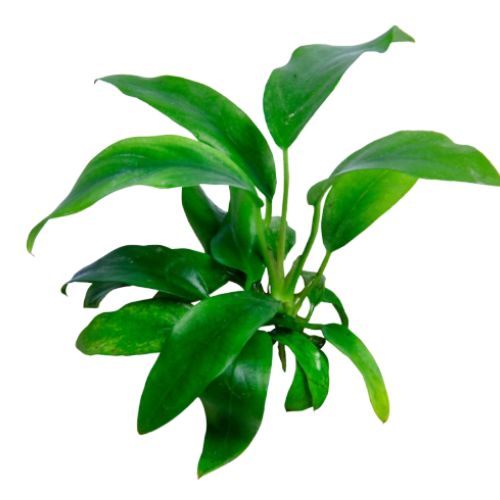 | Known for its thick leaves, this resilient plant provides good hiding spaces for angelfish. |
Amazon Sword (Echinodorus spp.) | A popular choice with broad leaves that create a lush environment, ideal for angelfish. |
Hornwort (Ceratophyllum demersum)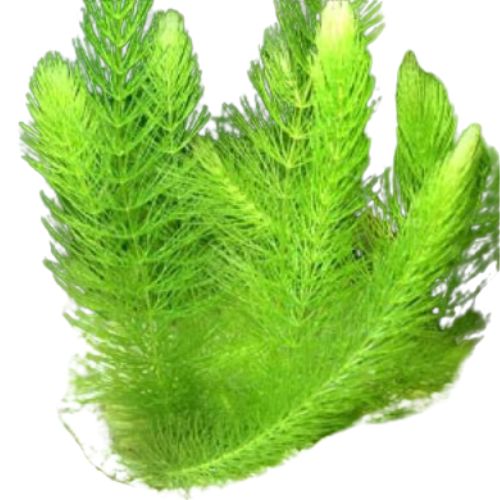 | A floating plant that offers cover and helps oxygenate the water, enhancing the overall aquarium health. |
Vallisneria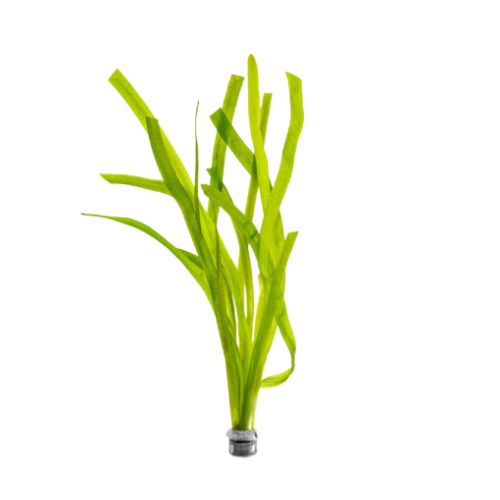 | Features long, ribbon-like leaves that provide vertical structure for hiding, making it perfect for angelfish. |
Preferred Lighting
Angelfish have specific preferences regarding light in their natural habitat. They thrive in environments characterized by dappled or filtered light, typically found in the understory of forests where sunlight gently penetrates through the leaves. Bright, direct sunlight can be stressful for them, so they prefer moderate lighting that mimics their natural conditions, promoting a comfortable environment. Additionally, angelfish often seek shaded areas among plants and submerged structures, where they can hide and feel secure. This combination of light preferences creates an ideal setting for their well-being and behavior.
The Introduction and Spread of Angelfish as Aquarium Fish
Angelfish have long captivated aquarists with their striking beauty and graceful movements.Their introduction to the aquarium hobby marked a significant moment in the world of ornamental fishkeeping. Angelfish were first introduced as pets in the early 20th century. Here’s a brief timeline of their introduction and spread:
- Early 1900s: Angelfish, particularly Pterophyllum scalare, were first imported from South America to Europe—specifically Germany—in 1909, and subsequently to the United States in 1915 for the aquarium trade.
- 1920s-1930s: Their popularity grew in Europe and North America as aquarists began breeding them in captivity, leading to the development of various color morphs and varieties.
- Mid-20th Century: Angelfish spread to other parts of the world, including Asia, as the global aquarium hobby expanded. Breeders in countries like Japan and Thailand began producing their own varieties.
- 21st Century: Today, angelfish are kept as pets worldwide, with a thriving market for both wild-caught and captive-bred specimens. They are particularly popular in North America, Europe, and Asia.
Setting Up an Angelfish Aquarium
Having explored the natural habitat of angelfish, it becomes essential to create an aquarium that caters to their specific needs. Angelfish require particular water quality, temperature, and environmental setups that significantly influence their health and behavior. To establish an ideal habitat, careful consideration must be given to the size of the aquarium, the filtration system, the choice of decorations, and the inclusion of live plants. Additionally, understanding their social nature and breeding habits can help provide a safe and comfortable living environment. Read on, we will discuss how to effectively set up an aquarium tailored for angelfish, ensuring they thrive and showcase their vibrant beauty.
Choosing the Right Tank
Choosing the right fish tank for angelfish is essential for their well-being, as it provides the necessary space for growth, helps maintain stable water quality, reduces stress by accommodating their territorial nature, and allows for environmental enrichment with plants and decorations.
Here are key factors to keep in mind:
1. Tank Size
Minimum Size: A tank of at least 20 gallons (75 liters) is recommended for a small group of angelfish. This size provides enough space for them to swim and establish a social hierarchy, reducing stress.
Larger Tanks: For a breeding pair or multiple individuals, consider a tank of 30 gallons (113 liters) or more to provide adequate space. More space allows for territorial behavior during breeding and provides room for the fish to spread out, minimizing aggression.
2. Shape
Tall Tanks: Angelfish are vertical swimmers, so taller tanks are preferable. A taller tank mimics their natural habitat, allowing them to swim freely and comfortably.
3. Filtration
Good Filtration System: Use a quality filtration system to maintain water quality, as angelfish are sensitive to poor water conditions. Effective filtration helps remove waste and toxins, ensuring a healthy environment.
Avoid Strong Currents: Ensure the filter doesn’t create strong currents, as angelfish prefer calmer waters. Strong currents can stress them and hinder their ability to swim comfortably.
4. Heater
Reliable Heater: Since angelfish thrive in warmer waters, a reliable heater is essential to maintain the ideal temperature range. Stable temperatures promote their health and prevent stress.
5. Aquascaping
Include plenty of live plants, driftwood, and decorations to provide shelter and create a natural environment. This setup mimics their native habitat, reducing stress and allowing them to exhibit natural behaviors.
6. Cover
Tank Lid: Use a lid or cover to prevent fish from jumping out, as angelfish can be curious and may leap. A cover ensures their safety and prevents accidental escapes, maintaining the integrity of your aquarium setup.
How to Decorate a Fish Tank
Decorating a fish tank involves creating a visually appealing and functional environment for your fish. Here are some tips on types of decorations, aquatic plants, and substrate to consider, particularly for angelfish:
Types of Decorations and Tips
Aquatic Plants: Java Fern, Anubias, Amazon Sword, Hornwort and Vallisneria. These plants were mentioned above in their preferred plants part.
Driftwood: Natural driftwood adds aesthetic appeal and creates hiding spots. Ensure it’s aquarium-safe and properly prepared before adding it to the tank.
Rocks and Caves:Use smooth stones or commercially available aquarium caves to provide additional hiding places for your fish.
Backgrounds:Consider adding a background to the tank for aesthetic purposes. This can be a solid color or a natural scene.
Substrate:
Sand:
- Fine Sand: A good choice for angelfish, as it mimics their natural habitat and is easy for them to navigate.
- Specialized Aquarium Sand: Look for sand specifically designed for aquariums to ensure it’s free from harmful substances.
Gravel:
If using gravel, choose smooth, rounded gravel that won’t harm the fish. Aim for a medium size that allows for good water flow while providing stability for plants.
- Smooth River Gravel:Naturally rounded stones that are safe and promote good water flow.
- Natural Pebble Gravel: Various sizes of rounded pebbles that are gentle on fish and support plant roots.
- Aquarium Gravel Mix: A blend of smooth stones that offers color variety while being safe for fish.
- Colored Gravel: Vibrant, aquarium-safe gravel that enhances the aquarium’s appearance.
Arrangement Tips:
- Layering: Place larger decorations and plants at the back and sides of the tank, with smaller items in the front for depth.
- Open Spaces: Leave open swimming areas for angelfish, as they enjoy open water to swim.
- Natural Look: Aim for a natural aesthetic that mimics their habitat, incorporating various heights and textures.
Water Conditions
Maintaining optimal water conditions is crucial when feeding angelfish, as these parameters directly influence their health, feeding behavior, and overall well-being. Proper water quality not only enhances their feeding experience but also supports their metabolic functions, ensuring they thrive in an aquarium environment.
Temperature
The recommended temperature for angelfish is between 76°F to 82°F (24°C to 28°C). This range is vital because it supports their metabolism and digestion, allowing them to process food efficiently. When the water temperature is too low, their metabolic rate slows down, leading to poor digestion and a higher risk of disease.
pH Value
Angelfish thrive in water with a pH value between 6.5 and 7.5. This slightly acidic to neutral range is important for their health, as it mimics their natural habitat in the Amazon River basin.
How to change the water in Angelfish tank?
Changing the water in an angelfish tank is crucial for maintaining a healthy environment. Here’s a step-by-step guide:
1. Gather Supplies:
- A clean bucket (dedicated for aquarium use)
- A siphon or gravel vacuum
- Water conditioner (to remove chlorine and chloramines)
- A thermometer (to check water temperature)
2. Determine Water Change Amount:
- Aim to change 10-20% of the water weekly, or 25-50% every two weeks, depending on the tank’s bioload and water quality.
3. Prepare New Water:
- Fill a clean bucket with tap water.
- Treat the water with a water conditioner to remove harmful chemicals.
- Adjust the temperature to match the tank (around 76°F to 82°F or 24°C to 28°C).
4. Remove Old Water:
- Use a siphon or gravel vacuum to remove water from the tank.
- Clean the substrate gently to remove debris while siphoning.
5. Add New Water:
- Slowly pour the prepared water into the tank, avoiding direct contact with the fish and decorations to minimize stress.
6. Monitor Parameters:
- After the water change, check the temperature and pH to ensure they are stable.
7. Clean Equipment:
- Rinse the siphon and bucket thoroughly after use to prevent contamination.
8. Regular Monitoring:
- Keep an eye on water quality parameters (ammonia, nitrite, nitrate) and adjust your water change schedule accordingly.
Feeding
Providing the right diet for angelfish is crucial to ensuring their health and vitality. Suitable food not only meets their nutritional needs but also promotes good growth and active behavior. The following is the chart for food type reference:
| Food Type | Description |
| High-Quality Pellets | Sinking or floating pellets specifically formulated for angelfish or tropical fish. |
| Flakes | Flake food that is high in protein and suitable for angelfish. |
| Frozen or Live Foods | Supplement with frozen or live foods like brine shrimp, bloodworms, and daphnia for protein. |
| Vegetables | Blanched vegetables like spinach, zucchini, or peas for added fiber. |
| Specialized Foods | Spirulina-based foods for added nutrients, especially for herbivorous varieties. |
Feed Amount And Frequency
Feed only what your angelfish can consume in about 2-3 minutes. Overfeeding can lead to poor water quality and health issues. Here’s some recommendations based on the side and weight.
| Angelfish Size | Amount per Feeding | Weight (Approx.) |
| Small (1-2 inches) | 1-2 pellets or flakes | 5-10 grams |
| Medium (3-4 inches) | 3-4 pellets or flakes | 10-20 grams |
| Large (5 inches and above) | 5-6 pellets or flakes | 20-30 grams |
The feeding frequency is generally 2-3 times a day for young and growing angelfish. As for adult angelfish, that will be once or twice daily.
Additional tips:
- Observe Eating Habits: Monitor how much your fish eat to adjust portions as needed.
- Variety: Rotate different types of food to ensure a balanced diet and keep your fish stimulated.
- Avoid Overfeeding: Always be cautious not to overfeed, as this can harm your fish and the tank’s water quality.
Behavior and Compatibility
Angelfish are social and territorial creatures with behaviors that can sometimes lead to competition and aggression.
Behaviors
Angelfish exhibit a range of behaviors that are important for keepers to understand. They can be quite territorial, especially during breeding, as they establish and defend specific areas in the tank. This territoriality often leads to competition for food, space, and mates, resulting in aggressive interactions, particularly in smaller or overcrowded environments. Aggression may manifest as chasing or fin nipping, especially among males or during mating rituals. While angelfish typically do not eat adults of their kind, they may consume smaller or weaker individuals, particularly when under stress or during spawning.
How to Avoid Cannibalism
In order to avoid cannibalism, there are 6 aspects to consider:
- Tank Size: Provide a sufficiently large tank (at least 30 gallons) to reduce territorial disputes and give each fish space.
- Group Size: Keep angelfish in groups of at least 5-6 individuals to help distribute aggression and prevent bullying.
- Separate Breeding Pairs: Consider moving breeding pairs to a separate tank during the breeding process to mitigate aggression towards other fish.
- Provide Hiding Spots: Use plants, rocks, and decorations to create hiding spots for smaller or weaker fish to escape aggression.
- Monitor Tank Dynamics: Keep an eye on interactions between your angelfish and be prepared to separate aggressive individuals if necessary.
- Avoid Overcrowding: Ensure the tank isn’t overstocked, as this can lead to stress and increased aggression.
Suitable Tank Mates
When selecting tank mates for angelfish, consider their temperament and space needs. Angelfish can be territorial and may exhibit aggression, especially during breeding. Here are some common fish that are generally compatible:
| Compatible Tank Mates | Description |
Tetras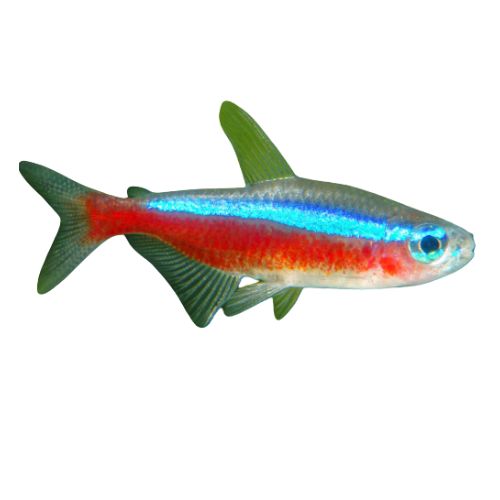 | |
| Neon Tetras | Small and peaceful, they coexist well with angelfish. |
| Cardinal Tetras | Slightly larger than neon tetras and also suitable. |
Corydoras Catfish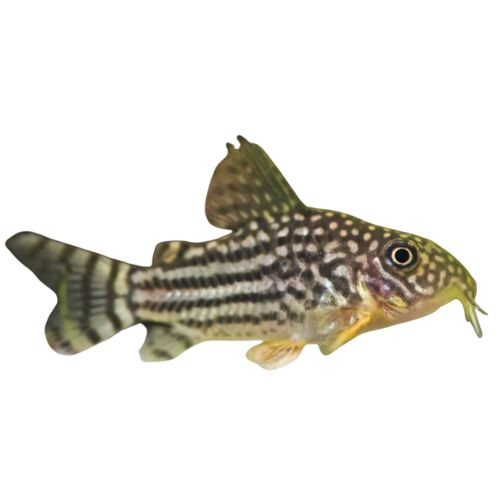 | |
| Corydoras | Peaceful scavengers that help keep the substrate clean. |
Gouramis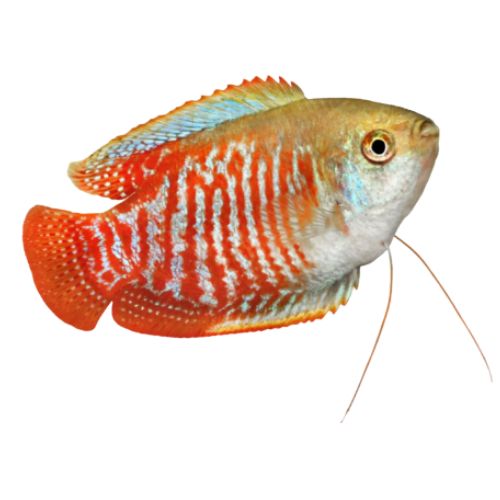 | |
| Dwarf Gourami | Generally peaceful and can share space with angelfish. |
Rasboras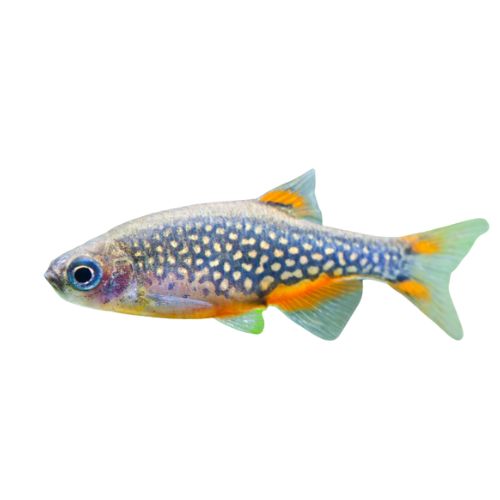 | |
| Harlequin Rasboras | Peaceful and social, well-suited for community tanks. |
Rainbowfish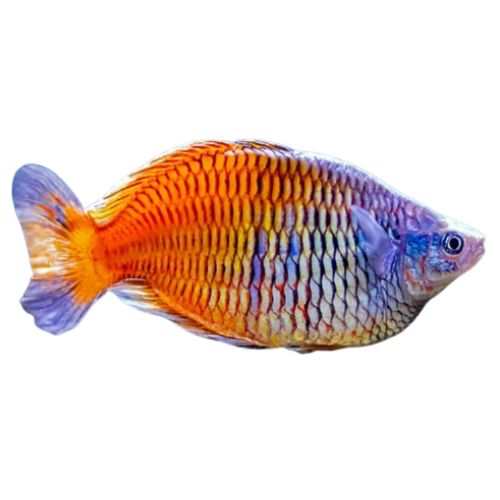 | |
| Boesemani Rainbowfish | Colorful and active, adaptable to similar water conditions. |
Plecos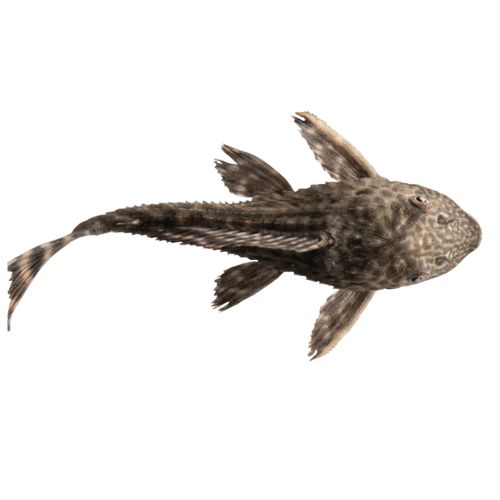 | |
| Bristlenose Pleco | A smaller species that helps with algae control and is usually non-aggressive. |
Tips for Successful Co-Habitation
- Tank Size: Ensure the tank is large enough to provide ample space for all species (at least 30 gallons for community setups).
- Hiding Spots: Provide plenty of plants and decorations to create hiding spots and reduce stress.
- Monitor Behavior: Keep an eye on interactions, especially during feeding and breeding times.
Breeding
Angelfish typically reach sexual maturity at about 6 months to 1 year of age. Males and females can be distinguished by their body shape and breeding tubercles (small bumps) on males. Notably, angelfish often form monogamous pairs for breeding, and it’s best to let them choose their partners to ensure compatibility.
During the breeding ritual, the pair exhibits courtship behaviors, swimming closely together and engaging in synchronized swimming while nipping at each other. Once a pair is ready to breed, they will select a flat surface, such as a leaf or a breeding cone, to lay their eggs. The female can lay anywhere from 100 to 1,000 eggs, depending on her size and health. Shortly after the female lays them, the male will fertilize the eggs, a process that usually occurs almost immediately.
Both parents actively guard and care for the eggs, fanning them with their fins to ensure good water circulation and prevent fungus. Typically, the eggs hatch within 48 to 60 hours, depending on water temperature and conditions. The fry will remain attached to the substrate for a few days until they absorb their yolk sacs. After the fry become free-swimming, the parents continue to protect them and may even move the fry to different spots in the tank.
Once the fry are free-swimming, they require small foods such as infusoria, crushed flakes, or baby brine shrimp to ensure proper growth. As the fry grow, it may become necessary to separate them from the parents and other fish to prevent stress and potential cannibalism.
Breeding Tips
- Water Conditions: Maintain clean water with stable parameters (pH 6.5-7.5, temperature 78-82°F or 25-28°C) to encourage breeding.
- Diet: Provide a high-quality diet to the breeding pair to ensure they are healthy and strong, which will improve the chances of successful spawning.
- Breeding Setup: Consider using a breeding tank to give the pair a quiet space to spawn without disturbances from other fish.
How long do angelfish live?
Angelfish typically have a lifespan of 10 to 15 years when kept in a well-maintained aquarium. However, with optimal care, some angelfish can live even longer, reaching up to 20 years or more.
Factors Affecting Lifespan
- Water Quality: Consistently clean and well-maintained water is crucial for their health.
- Diet: A balanced diet rich in nutrients contributes to their overall well-being and longevity.
- Tank Size: Providing adequate space helps reduce stress and territorial disputes.
- Tank Mates: Compatible tank mates can minimize stress and aggression.
- Genetics: Healthy breeding stock can influence the lifespan of angelfish.
Final Thoughts
Angelfish are enchanting creatures that can bring life and color to your aquarium. By understanding their needs and behaviors, you can create a thriving environment that not only supports their health but also enhances your aquatic experience. Whether you’re a seasoned aquarist or just starting, angelfish are a rewarding choice for any fish enthusiast. Read more fish related articles in our dedicated section and welcome to leave your comments!

